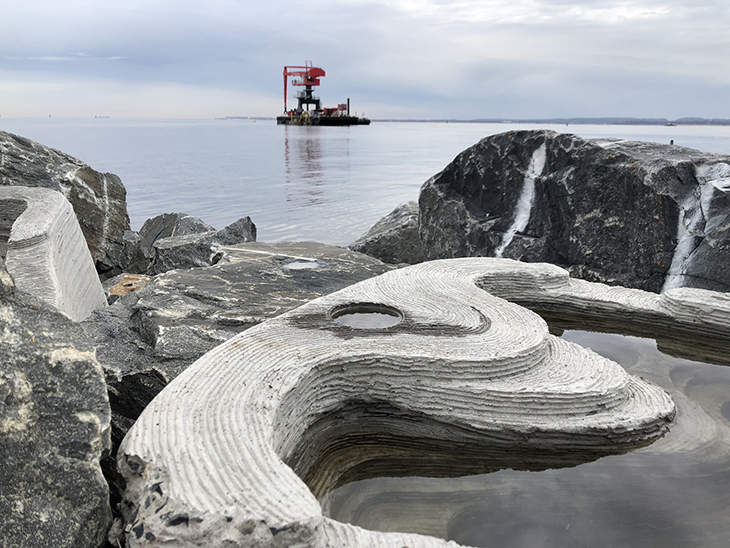
Off the coast of Staten Island, a groundbreaking project is underway, shaping a new concrete breakwater that ingeniously integrates nature into its design with breathtaking simplicity.
Known as the ‘Living Breakwater,’ this innovative construction is composed of specially crafted blocks designed to optimize space for bivalves, such as oysters, to attach and thrive. Above the waterline, carefully designed depressions capture seawater, fostering the creation of tidal pools on the surface.
The creative mind behind this ecological marvel is Kate Orff, a visionary from the eco-design and architecture firm SCAPE. Orff’s brilliance lies in her subtle modification of an existing concept, transforming it into a sanctuary for nature. Originally conceptualized for the Rebuild by Design competition, an initiative launched by the US Department of Housing and Urban Development in response to the devastation caused by Hurricane Sandy, the Living Breakwaters project has now received the prestigious Obel Award. This accolade, distinct from the Nobel Prize, celebrates the project’s outstanding contribution to this year’s theme of adaptation.
What makes the Living Breakwater truly exceptional is its harmonious fusion of human innovation and environmental conservation. By ingeniously altering conventional construction methods, Orff has created a haven for marine life while addressing the challenges posed by coastal erosion and natural disasters. This initiative not only demonstrates the power of innovative thinking but also serves as a beacon of inspiration for future endeavors in sustainable architecture and ecological preservation.
“The physical design of Living Breakwaters is an ingenious mix of natural and carefully modeled artificial elements that mimic naturally occurring reef formations in order to support marine life,” the Obel Award citation had stated.
“Architecture must recognize its ecological and social responsibilities. Living Breakwaters does exactly that. As such, this relatively low-cost, low-tech response provides a seminal example of how to design not against but with nature in adapting to the changes that lie ahead.”
As oysters populate the Living Breakwaters, the gaps between the blocks will gradually decrease and solidify, enhancing the effectiveness of this flood and storm defense system. Orff elucidated that innovations such as hers enable humanity to swiftly reinforce the interconnected elements of nature’s protective mechanisms, ensuring a rapid response to environmental challenges.
“[It] will not only protect humans and revitalize the coastline of New York City but also restore lost marine biodiversity,” said American landscape architect Martha Schwartz. She also served as chair of this year’s Obel Award jury.
“This is a visionary project that tackles the full task of adaptation, and which has the capacity to inspire and to positively impact vulnerable shorelines worldwide.”
What are your thoughts? Please comment below and share this news!
True Activist / Report a typo


